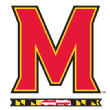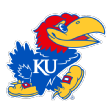Other regions: West | East | Midwest
It's upset time, baby. We've again gone deep in analyzing each of the six Giant vs. Killer matchups for each of the four regions. Remember, a Giant Killer is any team that beats an opponent seeded at least five spots higher. See our full methodology for more details.
We are once again utilizing our standard categories of Best Bets, Worth A Long Look, Not Completely Crazy and Stay Away. If you object to a game's placement, you're arguing with math: Our statistical model generates upset odds for each game. Those odds are based on three key factors: basic power ratings, teams' "Secret Sauce" (their statistical similarity to past Davids and Goliaths) and the matchup between Giants' and Killers' playing styles. This year, we also introduced a similar games component that is not yet a predictive part of the model, but adds interesting insights. Below each game's upset odds, you'll find data on how similar GK games have turned out, dating to 2007.
Best bet
No. 6 Arizona (Giant rating: 85.6, on a scale of 0 to 100 percent chance of beating an average Giant Killer) versus No. 11 Vanderbilt (Giant Killer rating: 13.7, on a scale of 0 to 100 percent chance of beating an average Giant) or No. 11 Wichita State (42.5)



Upset chance: 47.7 percent for Vanderbilt; 42.4 percent for Wichita State
(In the four most similar GK matchups to Arizona-Vanderbilt since 2007, the Giants went 3-1, outscoring Killers by an average of 8.3 points per 100 possessions.)
(In the four most similar GK matchups to Arizona-Wichita State since 2007, the Giants went 3-1, outscoring Killers by an average of 2.1 points per 100 possessions.)
You don't need advanced math for this one. Arizona is a Pack-Line Giant that controls the defensive boards and knocks down open 3s. The Wildcats are also just a couple of points stronger than either Vanderbilt or Wichita State, who were grossly underseeded into half a tournament slot apiece. This isn't the place to try to make sense of a selection committee that found Tulsa worthier than these teams. We'll just note that the Commodores and Shockers were each highly efficient at both ends of the floor against very strong schedules. And that if you look at any smart analytics system -- ESPN's basic power ratings, BPI, KenPom, Team Rankings -- it will list both Vanderbilt and Wichita State among the top 25 teams in the country. (Not RPI, though. We said "smart.") Vanderbilt and Wichita State are in fact the strongest 11-seeds, by far, in our database, which stretches to 2007.
With this particular kind of matchup, it doesn't even matter much that the Shockers would ordinarily have a much better statistical profile for an underdog than the Commodores. Historically, when Pack-Line Giants play Slow Killers, the family that includes both Vanderbilt and Wichita State, the Giant's qualities are much more important in driving the outcome. For example, Giants with weak sauce, who fail to dominate the boards or who are exceptionally poor at forcing turnovers -- like Wisconsin in 2013 or Notre Dame in 2011 -- are prone to upsets in these matchups, almost irrespective of their opponents' sauce. So the fact that our model rates the Commodores slightly higher than the Shockers in its basic power rankings (No. 19 vs. No. 22) gives Vanderbilt the greater chance of pulling an upset here. (Wichita State's Killer traits could matter much more in the second round, if they advance that far.)
With the gap so narrow in fundamental strength between Arizona and its potential opponents, this is a straight-up value play based on bizarre seeds. Sometimes, you take upsets where you find them.
No. 4 California (71.7) versus No. 13 Hawaii (15.2)


Upset chance: 36.4 percent
(In the four most similar GK matchups since 2007, the Giants went 2-2, outscoring Killers by an average of 1.3 points per 100 possessions.)
We understand why mainstream analysts love the Bears: They have a pair of top freshmen in Jaylen Brown and Ivan Rabb, and they've played very well over the past six weeks, building the narrative that their roster is coming together and peaking at just the right time. Statistically, however, Cal just does not have the traits that Giants need to lock down early-round games. They turn the ball over on 17.5 percent of trips down the floor while forcing turnovers on just 14.1 percent of opponent's possessions (ranking 347th), an astonishingly low rate, even if it is partially a product of their defensive style. They are heavily reliant on free throws -- never a good sign at this time of year -- but are terrible at shooting them (65.6 percent, ranking 319th). And they are vulnerable to 3-pointers (opponents are shooting 35.1 percent, ranking 191st).
Meanwhile, Hawaii is a dangerous Killer: The Rainbow Warriors are nearly five points stronger than a typical 13-seed, and force steals on 10.8 percent of opponents' possessions (ranking 32nd). And the most similar games in our database to this matchup include a dead ringer that yielded a memorable upset: Ole Miss over Wisconsin in 2013.
Mark our words: Cal has the stars, but Hawaii's guards will prove surprisingly disruptive to anyone just starting to learn about Roderick Bobbitt and Quincy Smith. And this contest may just hinge on whether the Rainbow Warriors, who are happy to launch bombs (39.6 percent of FGA, ranking 70th) but not too adept at making them (shooting 32.8 percent on 3s, ranking 254th), can find a long-range groove against the Bears.
Not completely crazy
No. 2 Villanova (89.7) versus No. 15 UNC Asheville (6.9)


Upset chance: 12.9 percent
(In the four most similar GK matchups since 2007, the Giants went 4-0, outscoring Killers by an average of 34.3 points per 100 possessions.)
Villanova is one of the most efficient teams in the country at both ends, with an offense that spreads the floor, moves the ball and scores an adjusted 117.2 points per 100 possessions (ranking 11th) and a man-to-man defense that forces turnovers without sacrificing rebounds. The Bulldogs can seriously annoy anybody with their relentless pressure -- Asheville ranks third in the country in steal percentage -- and clamp down on the perimeter, allowing opponents to hit just 28.8 percent of 3-point attempts (ranking 2nd). Long-distance shooting has been a problem all season long for the Wildcats, who were particularly inaccurate in their losses to Oklahoma and Providence. So there are bound to be moments in this game where Villanova lets it fly and clang, and maybe even an anxious stretch or two. But Asheville is undersized and plays just a seven-man rotation, and once they start letting big men inside, it's tough for them to keep up. Letting your opponents shoot 51.9 percent on 2-point attempts (ranking 290th) is no way to take down a Goliath. So they need to hope that Nova goes cold at the wrong time.
No. 5 Maryland (77.4) vs. No. 12 South Dakota State (4.8)


Upset chance: 6.1 percent
(In the four most similar GK matchups since 2007, the Giants went 3-1, outscoring the Killers by an average of 14.4 points per 100 possessions.)
Entering Selection Sunday, Maryland was dangling at the end of a pole, just waiting for a worthy predator to claim its prize. Instead, the Jackrabbits showed up. As we mentioned in the East preview, if Maryland had faced Chattanooga, our model says there would have been a 52.1 percent chance of an upset. Arkansas-Little Rock would have had a 24.3 percent chance of knocking off the Terps. But our model sees South Dakota State as a schoolyard bully -- a decent team designed to rule a weak conference, rather than challenge bigger programs. Simply put, the Jackrabbits don't take enough risks. They take 3-pointers on 36.2 percent of field goals, which is only slightly above the national average. They force turnovers on just 17.1 percent of possessions. They do their best work on the boards, where 6-9 Mike Daum (15.2 points per game, 6.1 rebounds per game) has them ranked in the top 100 at both ends. And that could prove valuable against a Maryland team that is ranked 160th in offensive rebounding and 152nd in defensive rebounding, despite having Diamond Stone and Robert Carter inside.
But the real way to beat Maryland is to expose its horrible turnover differential. The Terps cough it up on 19.1 percent of possessions and get it back just 16.5 percent of the time. South Dakota State's conservative defense isn't built to exploit those ball-handling weaknesses, though. So even though Generic Killers (South Dakota State's family) beat Generic Giants (Maryland's family) 32 percent of the time, South Dakota State's weak arsenal keeps this upset percentage low. If the Jackrabbits are able to defy the odds, it will likely require a lot of help from Maryland.
No. 3 Miami (86.7) versus No. 14 Buffalo (6.0)


Upset chance: 6.0 percent
(In the four most similar GK matchups since 2007, the Giants went 2-2, outscoring the Killers by an average of 2.0 points per 100 possessions.)
Fairly quietly, and without the huge stumbles that have plagued so many other top-20 programs this season, Jim Larrañaga has built another team with the same profile as his past contenders. Miami is deliberate and protects the ball on offense, and is efficient on defense (allowing 97.1 adjusted points per possession, ranking 44th), where it forces opponents into bad shots and positions the Hurricanes for rebounds. But the Canes are also stocked with shooters this time around: Sheldon McClellan and Davon Reed each have effective field goal percentages above 55 percent, and Anthony Lawrence and Ivan Cruz Uceda are coming off the bench to hit more than 40 percent of their treys. Indeed, at 117.2 adjusted points per 100 possessions, this is the best offense of any Larrañaga team since the dawn of the modern spreadsheet era. All of that is a lot to contend with for Buffalo, a team who is just about average in both offensive and defensive efficiency, loses the turnover battle at both ends and plays dangerously fast for a Killer. The Bulls snuck by Akron in the MAC final because the Zips just gave up on anything but taking jump shots (they took two free throws in the entire game). We'd say the Bulls' best chance is actually to take a page from that playbook and launch 3s against Miami, but Buffalo is shooting just 33.5 percent from downtown. If our model had lungs, it would sigh.
Stay away
No. 1 Kansas (95.1) versus No. 16 Austin Peay (2.4)


Upset chance: 1.0 percent
(In the four most similar GK matchups since 2007, the Giants went 4-0, outscoring the Killers by an average of 37 points per 100 possessions.)
In sabermetrics, there's a method called log5, which allows you to adjust a given statistic for the performance of an opponent. For example, if we look at a .310 hitter facing a pitcher who allows opponents to bat .290 in a league where the average BA is .260, Log5 expects he will hit .343. We applied log5 to predict how Kansas will shoot against Austin Peay, who was the eighth-best team in the 22nd-best conference in the NCAA this season, and who ranked 325th in effective field goal percentage allowed (53.6 percent). The method broke.
Thanks to Liz Bouzarth, John Harris and Kevin Hutson of Furman University for research assistance.
